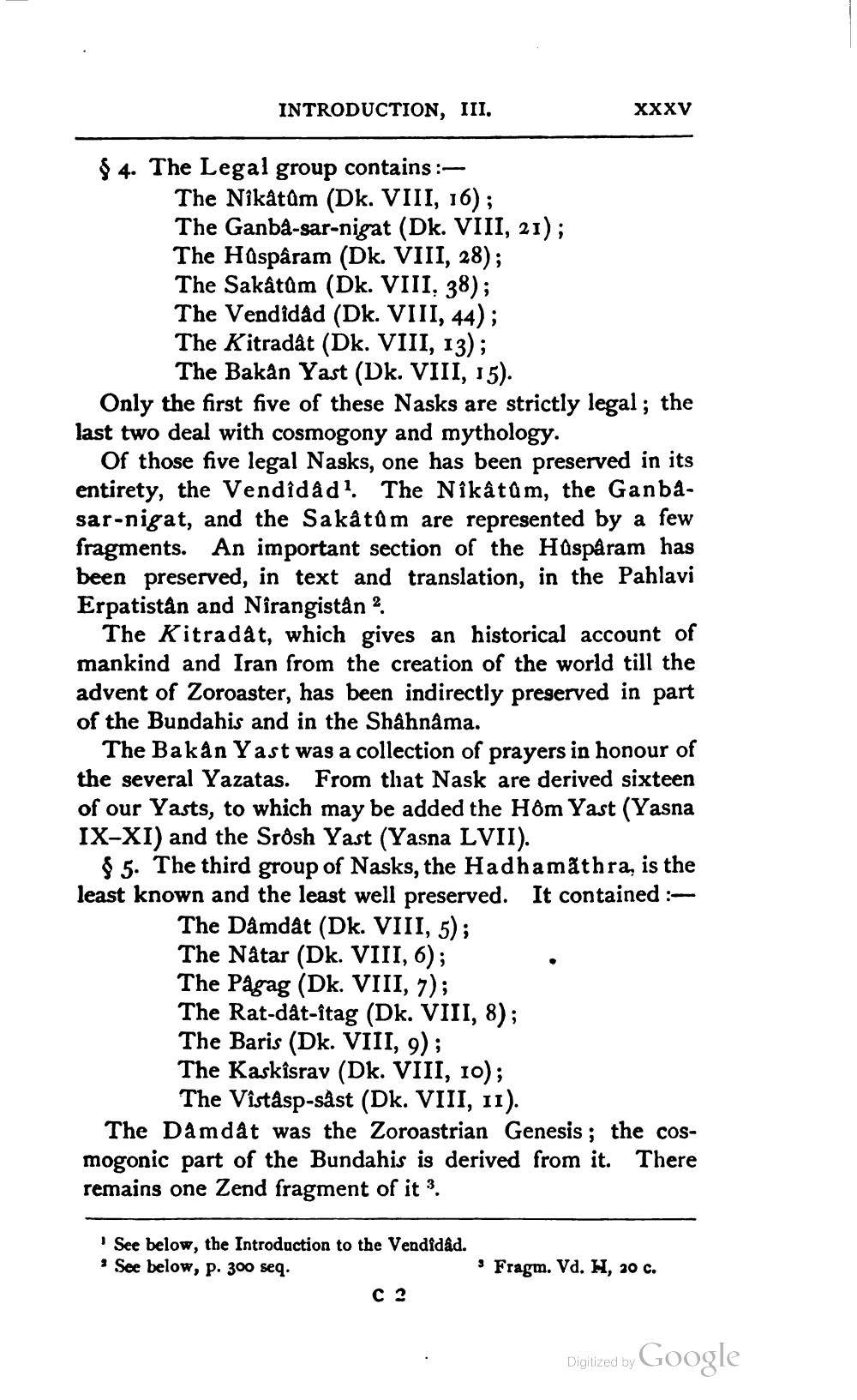________________
INTRODUCTION, III.
XXXV
$ 4. The Legal group contains :
The Nikatom (Dk. VIII, 16); The Ganba-sar-nigat (Dk. VIII, 21); The Hasparam (Dk. VIII, 28); The Sakatam (Dk. VIII, 38); The Vendidad (Dk. VIII, 44); The Kitradât (Dk. VIII, 13);
The Bakan Yast (Dk. VIII, 15). Only the first five of these Nasks are strictly legal; the last two deal with cosmogony and mythology.
Of those five legal Nasks, one has been preserved in its entirety, the Vendidad? The Nîkâtům, the Ganbasar-nigat, and the Sakåtam are represented by a few fragments. An important section of the Hasparam has been preserved, in text and translation, in the Pahlavi Erpatistan and Nirangistan 2
The Kitradat, which gives an historical account of mankind and Iran from the creation of the world till the advent of Zoroaster, has been indirectly preserved in part of the Bundahis and in the Shahnama.
The Bakan Yast was a collection of prayers in honour of the several Yazatas. From that Nask are derived sixteen of our Yasts, to which may be added the Hôm Yast (Yasna IX-XI) and the Srðsh Yast (Yasna LVII).
$ 5. The third group of Nasks, the Hadhamathra, is the least known and the least well preserved. It contained :
The Dåmdat (Dk. VIII, 5); The Nåtar (Dk. VIII, 6); The Pågag (Dk. VIII, 7); The Rat-dat-itag (Dk. VIII, 8); The Baris (Dk. VIII, 9); The Kaskisrav (Dk. VIII, 10);
The Viståsp-såst (Dk. VIII, 11). The Dåmdat was the Zoroastrian Genesis ; the cosmogonic part of the Bundahis is derived from it. There remains one Zend fragment of it 3.
See below, the Introduction to the Vendidad. . See below, p. 300 seq.
· Fragm. Va. H, 20 c. C2
Digitized by
Digitized by Google




